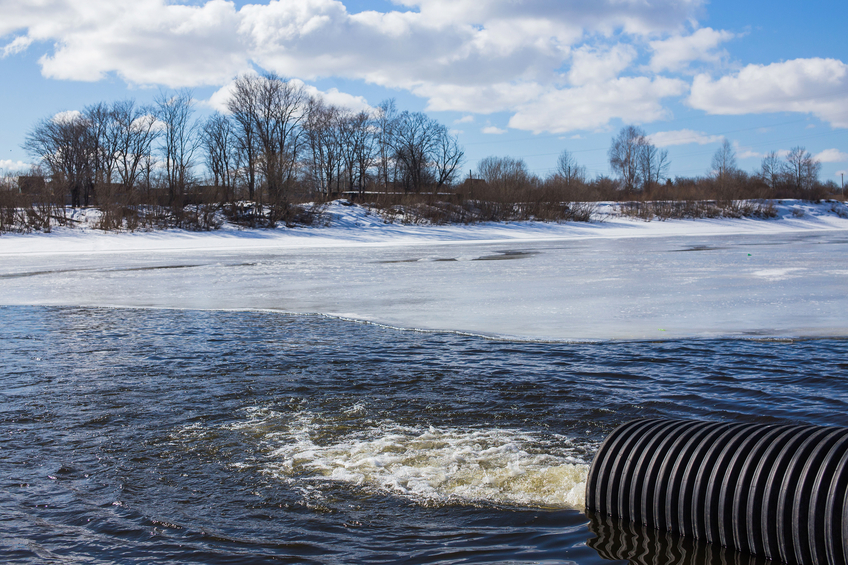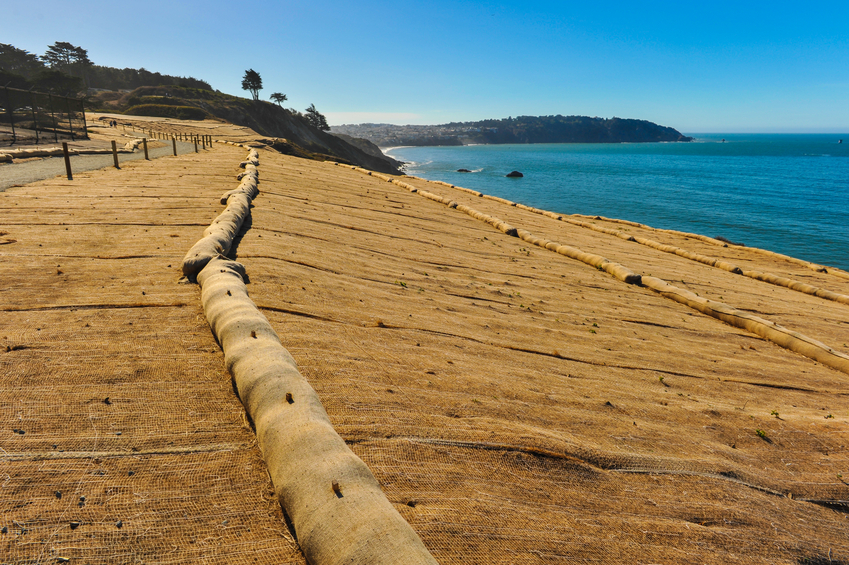New Jersey Stormwater and Ethics 24 PDH Discount Package 2
Courses in this Package
Developing Your Stormwater Pollution Prevention Plan (SWPPP) (C04-057)
Construction Site Storm Water - Erosion Control (C03-001)
Post Construction Storm Water Management - Structural BMP's (C10-001)
Illicit Discharge Detection and Elimination (C05-002)
Ethics in Professional Practice (LE2-007)

This online engineering PDH offers steps for planning how to prevent and contain stormwater pollution. It offers a step by step guide on what should be included in the plan, as well as helpful tips for how the plan can be maintained, adhered to, and exceeded in order to ensure a high level of quality.
Stormwater runoff is water from rain or snowmelt that does not immediately infiltrate into the ground and flows over or through natural or man-made storage or conveyance systems. When undeveloped areas are converted to land uses with impervious surfaces such as buildings, parking lots, and roads, the natural hydrology of the land is altered and can result in increased surface runoff rates, volumes, and pollutant loads.
This course provides useful tips about maintaining a SWPPP, as well as examples of and foresight into what can go wrong with various different kinds of materials which are commonly found at industrial sites. This includes solids, liquids, and waste. It also provides useful information on how to effectively and efficiently handle stormwater discharge in the event that control measures fail, and information on monitoring pollutants in stormwater discharge.
This 4 PDH online course is applicable to industrial, civil, environmental, and sustainability engineers as well as others interested in gaining a basic understanding about developing a stormwater pollution prevention plan.
This PE continuing education course is intended to provide you with the following specific knowledge and skills:
- Understanding what causes stormwater pollution and its effects on the environment
- Learning how to prevent and contain stormwater pollution
- Learning how to develop a stormwater pollution prevention plan in order to be in compliance with a National Pollutant Discharge Elimination System permit
- Learning how to analyze the particular pollutants in your stormwater discharge
Upon successful completion of the quiz, print your Certificate of Completion instantly. (Note: if you are paying by check or money order, you will be able to print it after we receive your payment.) For your convenience, we will also email it to you. Please note that you can log in to your account at any time to access and print your Certificate of Completion.

This online engineering PDH course presents EPA's control measures to minimize erosion at construction sites due to higher peak flow rates, increased flooding, etc.
Erosion and sedimentation related to construction site storm water runoff can significantly affect the aquatic population and hydraulic characteristics of the receiving waters. Alterations in hydraulic characteristics of streams receiving runoff include higher peak flow rates, increased frequency and duration of bankfull and subbankfull flows, increased occurrences of downstream flooding, and reduced baseflow levels.
EPA recognizes that such alterations can be prevented by implementing an effective storm water management program. Therefore the EPA published the Storm Water Phase II Rule on
This 3 PDH online course is applicable to municipality owners and/or operators, construction contractors/workers, site developers, engineers, managers, and all other personnel involved in the implementation of erosion controls for storm water runoff from construction sites.
This PE continuing education course is intended to provide you with the following specific knowledge and skills:
- Types and methods of erosion control systems
- Applicability
- Siting and design criteria
- Maintenance and cost considerations
- Effectiveness and limitations
In this professional engineering CEU course, you need to review EPA’s Best Management Practice relating to the “Erosion Control” section of the “Construction Site Storm Water Runoff Control”. This section of the BMP addresses the following erosion control methods:
- Chemical Stabilization
- Mulching
- Permanent Seeding
- Sodding
- Soil Roughening
- Geotextiles
- Gradient Terraces
- Soil Retention
- Temporary Slope Drain
- Temporary Stream Crossings
- Vegetated Buffer
- Construction Sequencing
- Dust Control
Once you complete your course review, you need to take a multiple-choice quiz consisting of twenty (20) questions to earn 3 PDH credits. The quiz will be based on the “Erosion Control” section of this EPA publication.
Upon successful completion of the quiz, print your Certificate of Completion instantly. (Note: if you are paying by check or money order, you will be able to print it after we receive your payment.) For your convenience, we will also email it to you. Please note that you can log in to your account at any time to access and print your Certificate of Completion.

This online engineering PDH course describes EPA's stormwater BMP for protecting streams receiving runoff from alterations in hydraulic and aquatic characteristics.
Erosion and sedimentation related to construction site storm water runoff can significantly affect the aquatic population and hydraulic characteristics of the receiving waters. Alterations in hydraulic characteristics of streams receiving runoff include higher peak flow rates, increased frequency and duration of bankfull and subbankfull flows, increased occurrences of downstream flooding, and reduced baseflow levels.
EPA recognizes that such alterations can be prevented by implementing an effective storm water management program. Therefore the EPA published the Storm Water Phase II Rule on
This 10 PDH online course is applicable to municipality owners and/or operators, construction contractors/workers, site developers, engineers, managers, and all other personnel involved in the implementation of structural best management practices for post construction storm water management.
This PE continuing education course is intended to provide you with the following specific knowledge and skills:
- Types and methods of structural bmp for storm water management
- Applicability
- Siting and design criteria
- Maintenance and cost considerations
- Effectiveness and limitations
In this professional engineering CEU course, you need to review EPA’s “Structural BMP” section of the “Post Construction Storm Water Management in New Development and Redevelopment”. This section of the BMP addresses the following:
- Dry Extended Detention Ponds
- Wet Ponds
- Infiltration Trenches
- Porous Pavements
- Bioretention
- Sand and Organic Filters
- Storm Water Wetlands
- Grassed Swales
- Grassed Filter Strips
- Catch Basins
- In-line Storage
- Manufactured Products for Storm Water Inlets
Once you complete your course review, you need to take a multiple-choice quiz consisting of forty (40) questions to earn 10 PDH credits. The quiz will be based on the “Structural BMP” section of this EPA publication.
Upon successful completion of the quiz, print your Certificate of Completion instantly. (Note: if you are paying by check or money order, you will be able to print it after we receive your payment.) For your convenience, we will also email it to you. Please note that you can log in to your account at any time to access and print your Certificate of Completion.

This online engineering PDH course presents EPA's BMP for identifying and eliminating non-stormwater discharges to storm sewers to improve runoff stormwater quality.
Non-storm water discharges are typically the result of unauthorized connections of sanitary or process wastewater drains to storm sewers. These connections are common, yet often go undetected. Non-storm water discharges can include discharges of process water, air conditioner condensate, non-contact cooling water, vehicle wash water, or sanitary waste.
EPA recognizes that these discharges are significant sources of pollutants, and unless regulated by an NPDES permit, they are also illegal. Therefore the EPA published the Storm Water Phase II Rule on
This 5 PDH online course is applicable to municipality owners and/or operators, construction contractors/workers, site developers, engineers, managers, and all other personnel involved in the detection and elimination of illicit discharges.
This PE continuing education course is intended to provide you with the following specific knowledge and skills:
- Types and methods of illicit discharges
- Applicability
- Siting and design criteria
- Maintenance and cost considerations
- Failing Septic Systems
- Industrial/Business Connections
- Recreational Sewage
- Sanitary Sewer Overflows
- Identifying Illicit Connections
- Wastewater Connections to the Storm Drain System
- Illegal Dumping
Once you complete your course review, you need to take a multiple-choice quiz consisting of twenty five (25) question ns to earn 5 PDH credits. The quiz will be based on this EPA publication.
Upon successful completion of the quiz, print your Certificate of Completion instantly. (Note: if you are paying by check or money order, you will be able to print it after we receive your payment.) For your convenience, we will also email it to you. Please note that you can log in to your account at any time to access and print your Certificate of Completion.

In this online engineering PDH course, background on the philosophical models that guide ethical behavior is discussed and then applied to specific situations in engineering codes of ethics. This course is based on the American Society of Mechanical Engineers Professional Practice Curriculum, Volume 8, Section: Engineering Ethics.
Many engineering organizations have drafted codes of ethics to which their members are required to commit. Generally, these codes are quite similar and are based on a few fundamental principles which provide guidance to professional engineers in common situations. Nevertheless, there are many difficult or ambiguous situations in which the best ethical solution is difficult to determine.
This 2 PDH online course is intended primarily for engineers seeking to learn ethical principles and how to apply them to their professional practice.
This PE continuing education course is intended to provide you with the following specific knowledge and skills:
-
Determining ethical behavior using several philosophical models
-
Evaluating a practical situation in terms of a professional code of ethics
-
Identifying situations that represent conflicts of interest and formulate a proper response
-
Applying the standards of professional ethics in technical communication
-
Recognizing environmental impacts of engineering work
-
Considering principles of sustainable development in the performance of professional duties
In this professional engineering CEU course, you need to review "Ethics in Professional Practice" published by the American Society of Mechanical Engineers (ASME). (This course document is reproduced by permission of the ASME (www.asme.org). You may also download from or view this course document on the ASME's website by clicking on Ethics in Professional Practice).
Once you complete your course review, you need to take a multiple-choice quiz consisting of fifteen (15) questions to earn 2 PDH credit. The quiz will be based on this ASME publication.
Upon successful completion of the quiz, print your Certificate of Completion instantly. (Note: if you are paying by check or money order, you will be able to print it after we receive your payment.) For your convenience, we will also email it to you. Please note that you can log in to your account at any time to access and print your Certificate of Completion.